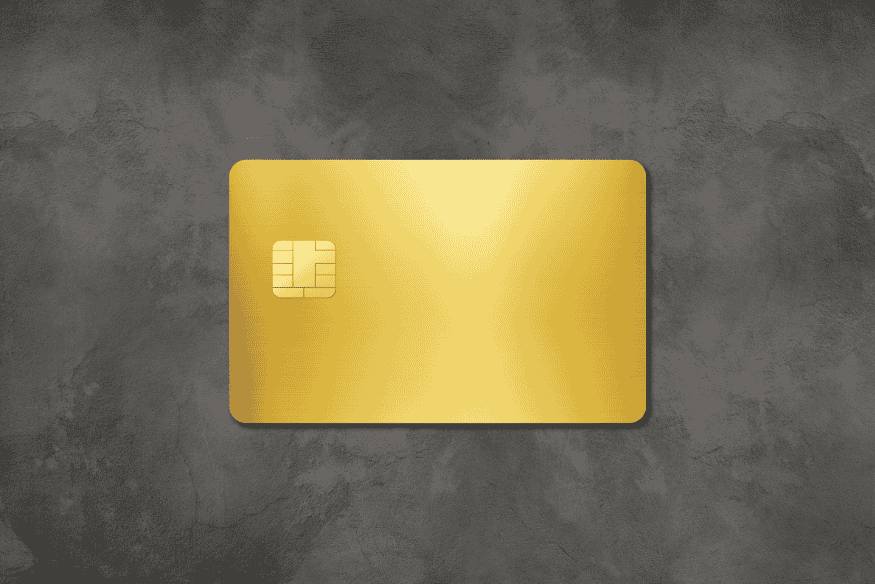You’ve probably heard that credit cards come with high interest rates. But, if you pay off your balance each month, the interest rate doesn’t matter as much. This is because of the credit card grace period. It lets you make purchases without paying interest.
Knowing how the grace period works is key to avoiding extra interest on your credit card. By paying your balance in full before the deadline, you can enjoy buying things without interest.
Key Takeaways
- Paying your credit card balance in full each month avoids interest charges.
- The grace period allows for interest-free purchases if you pay on time.
- Understanding your credit card terms is essential to maximizing the benefits of the grace period.
- Missing a payment can result in interest charges and fees.
- Reviewing your credit card agreement helps you understand the grace period specifics.
What Is a Credit Card Grace Period?
Ever wondered about the “grace period” on credit cards? It’s simple: it’s the time you have to pay your bill without extra interest. Knowing this can help you handle your money better.
Definition and Basic Concept
A credit card grace period is a nice offer from your issuer. It lets you pay off your balance fully by the due date without extra interest. Most cards offer 21 to 25 days, but it can change based on the issuer and card.
To use the grace period, you must pay your full balance by the due date. If you don’t, you’ll face interest charges. Remember, the grace period doesn’t cover cash advances or some other types of transactions, which can start charging interest right away.
Legal Requirements for Grace Periods
The Credit Card Accountability Responsibility and Disclosure (CARD) Act of 2009 sets rules for grace periods. It says issuers must give you at least 21 days between when your statement closes and when you must pay. This lets you check your statement and pay on time.
The CARD Act also requires issuers to clearly share the details of the grace period. They must explain how it works, when interest kicks in, and how to avoid it. Knowing these rules helps you use your credit card wisely.
| Regulation | Description | Benefit to Cardholder |
|---|---|---|
| CARD Act of 2009 | Mandates at least 21 days between statement closing date and payment due date | Gives cardholders sufficient time to review and pay their statements |
| Clear Disclosure | Requires issuers to clearly explain grace period terms and conditions | Helps cardholders understand how to avoid interest charges |
The Credit Card Grace Period Explained

Knowing how credit card grace periods work can help you avoid extra interest. When you use a credit card, you’re borrowing money. There are rules, like the grace period, which lets you pay without interest.
The Billing Cycle Timeline
Credit cards have a monthly cycle. This cycle has two key dates: the statement closing date and the payment due date. The statement closing date is when your card issuer makes your statement. The payment due date is when you must pay to avoid fees and interest.
For example, if your statement closes on the 15th, you might pay by the 10th of the next month. This gives you a grace period to pay off your balance without interest.
When the Clock Starts and Stops
The grace period begins on the statement closing date and ends on the payment due date. You can pay in full without interest during this time. Remember, the length of your grace period depends on your card issuer and the type of card.
Some cards offer a 25-day grace period, while others may have more or less. Always check your card agreement to know your grace period.
Calculation Methods Used by Card Issuers
Card issuers use different ways to calculate interest if you don’t pay in full. These include the average daily balance, daily balance, and previous balance methods. Knowing these can help you use your card wisely.
| Calculation Method | Description | Impact on Interest Charges |
|---|---|---|
| Average Daily Balance | Interest is calculated based on the average balance during the billing cycle. | Moderate interest charges |
| Daily Balance | Interest is calculated daily based on the current balance. | Higher interest charges if balance is high |
| Previous Balance | Interest is calculated based on the previous month’s balance. | Can result in higher interest if previous balance was high |
Types of Transactions Covered by Grace Periods
Not all credit card transactions are the same when it comes to grace periods. Knowing the differences can help you save money. The type of transaction you make affects whether you get a grace period and how long it lasts.
Purchases vs. Cash Advances
Grace periods usually apply to purchases. This means you can avoid interest if you pay your balance in full by the due date. But, cash advances are different. They start charging interest right away, with no grace period.
For example, withdrawing $500 in cash might cost you a 3% fee upfront. Interest will start right away. But, if you spend $500 on a purchase, you won’t pay interest if you pay it off by the due date.
| Transaction Type | Grace Period | Interest Charges |
|---|---|---|
| Purchases | Yes | No, if paid in full |
| Cash Advances | No | Yes, immediately |
Balance Transfers and Special Promotions
Balance transfers and special promotions might not have the standard grace period. When you move a balance, the new card’s terms apply. These deals might not have a grace period or have different rules.
For example, a balance transfer to a card with a 0% APR promotion might not charge interest during the offer period. But, it’s key to know when the offer ends and what the rate will be then.
- Review the terms of your balance transfer carefully.
- Understand when interest will start being charged.
- Make timely payments to avoid late fees.
How Grace Periods Differ Between Credit Card Types
The type of credit card you have affects your grace period. Each card type, like standard, premium, store, or business, has its own grace period rules. These rules vary by issuer.
Standard Credit Cards vs. Premium Cards

Standard credit cards usually have a 21-day grace period. But, this can change. Premium cards offer longer grace periods or extra perks. For example, Chase Sapphire Preferred and American Express Gold Card are known for being customer-friendly.
Store Cards and Their Grace Period Policies
Store credit cards, like those from Target or Amazon, have different rules. They might have shorter grace periods or special payment rules. Always check the terms before applying.
Business Credit Cards
Business credit cards are for work expenses. They often have special grace period rules. Cards like Chase Ink Business Preferred or American Express Business Gold offer flexible terms for business cash flow.
- Standard credit cards: Typically offer around 21 days of grace period.
- Premium credit cards: May offer longer grace periods or additional benefits.
- Store cards: Often have varying grace periods and specific payment rules.
- Business credit cards: Designed with business needs in mind, potentially offering flexible terms.
How to Maintain Your Credit Card Grace Period
Your credit card grace period is a great tool for managing money. To keep it, you must pay on time and settle your balance. This way, you avoid extra charges and stay financially healthy.
Paying Your Balance in Full
It’s key to pay your balance in full by the due date. This means clearing all outstanding charges by the due date. Doing so prevents interest and keeps your credit score strong.
Payment Timing Strategies
Good timing is crucial for keeping your grace period. Set up automatic payments to ensure on-time payments. Also, make payments early to account for any delays.
Tracking Your Payment History
Keeping an eye on your payment history is vital. It helps spot any issues early. Use a table like the one below to track your payments:
| Payment Date | Payment Amount | Balance |
|---|---|---|
| 2023-02-15 | $500 | $0 |
| 2023-03-15 | $750 | $0 |
| 2023-04-15 | $1000 | $0 |
By following these tips, you can keep your grace period and enjoy interest-free credit.
Common Misconceptions About Grace Periods
Many people don’t understand how credit card grace periods work. They often mix it up with other terms, leading to big mistakes. It’s important to clear up these misunderstandings to manage your credit card well.
Grace Period vs. Due Date Confusion
People often get confused between the grace period and the due date. The grace period is the time before the due date when you can pay without interest. The due date is when you must pay at least the minimum to avoid late fees. Knowing the difference helps you avoid extra charges.
For example, if your billing cycle ends on the 15th and your due date is the 5th of the next month, you have about 20 days to pay without interest. Paying in full before the due date means no interest.
Partial Payment Myths
Some think paying part of their bill avoids interest. But, interest is charged on what’s left if you don’t pay the full amount. For instance, if you owe $1,000 and pay $800, you’ll still be charged interest on the $200 left.
To avoid interest, pay your full balance during the grace period. If you can’t, try making smaller payments throughout the month. This can lower your daily balance and the interest you pay.
Losing Your Grace Period: Causes and Consequences
It’s important to know why you might lose your credit card grace period. This period lets you avoid interest on purchases if you pay in full by the due date. But, certain actions can take away this benefit, adding extra costs.
Missing Payments or Paying Late
Missing payments or paying late can cause you to lose your grace period. Your credit card issuer might remove the grace period if you’re late. This means you’ll be charged interest right away. To avoid this, make sure to pay on time. Setting up automatic payments can help you never miss a payment.
Also, missing payments or paying late can hurt your credit score. Your payment history is a big part of your credit score. So, it’s crucial to keep up with payments.
Carrying a Balance
Carrying a balance can also lead to losing your grace period. If you don’t pay your balance in full, interest is charged. Often, this means you’ll lose the grace period, as interest is charged on new purchases right away. To keep your grace period, try to pay your balance in full each month.
How to Restore Your Grace Period
To get your grace period back, you need to pay off any outstanding balance and make on-time payments. This shows you’re responsible with credit. It might get your grace period back. Also, contact your credit card issuer to learn about their rules for getting the grace period back.
Keeping a good payment history and low credit utilization is key. It helps you manage your credit card well and avoid losing your grace period.
Credit Card Grace Periods in Finland
Finland’s banking rules affect credit card grace periods. Knowing these rules helps you use your credit card wisely.
Finnish Banking Regulations
The Financial Supervisory Authority (FIN-FSA) watches over Finnish banks. They make sure banks follow rules to protect customers.
Some important Finnish banking rules are:
- Clear terms on credit cards must be shared
- Rules for when payments are due
- How interest rates can change
Popular Finnish Credit Cards and Their Grace Periods
Many credit cards are popular in Finland. Each has its own grace period rules. For example:
| Credit Card | Grace Period |
|---|---|
| Nordea Kredit | Up to 55 days |
| Danske Bank Credit Card | Up to 50 days |
How Finnish Practices Compare Internationally
Finnish credit card rules, like grace periods, mostly follow international standards. But, there are some differences. These differences are mainly in how grace periods are figured out and used.
Understanding these practices helps you manage your credit card better. It also helps you make smart choices about your money.

Conclusion
Knowing about credit card grace periods is key to avoiding interest. It helps you use credit cards wisely. By understanding grace periods, you can make better choices with your credit cards.
To dodge interest, pay your balance off before the grace period ends. This smart move saves you money and keeps your credit score up.
Following good credit card habits is important. Keep track of your payments and pay on time. This way, you get the most out of your credit card and stay financially stress-free.
In Finland, knowing your credit card’s rules is especially important. The banking and credit card scene there might be different from elsewhere. So, it’s crucial to understand your card’s terms to use it well.









